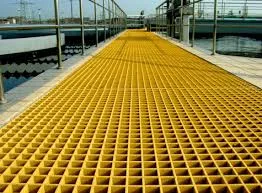
-
 Afrikaans
Afrikaans -
 Albanian
Albanian -
 Amharic
Amharic -
 Arabic
Arabic -
 Armenian
Armenian -
 Azerbaijani
Azerbaijani -
 Basque
Basque -
 Belarusian
Belarusian -
 Bengali
Bengali -
 Bosnian
Bosnian -
 Bulgarian
Bulgarian -
 Catalan
Catalan -
 Cebuano
Cebuano -
 China
China -
 China (Taiwan)
China (Taiwan) -
 Corsican
Corsican -
 Croatian
Croatian -
 Czech
Czech -
 Danish
Danish -
 Dutch
Dutch -
 English
English -
 Esperanto
Esperanto -
 Estonian
Estonian -
 Finnish
Finnish -
 French
French -
 Frisian
Frisian -
 Galician
Galician -
 Georgian
Georgian -
 German
German -
 Greek
Greek -
 Gujarati
Gujarati -
 Haitian Creole
Haitian Creole -
 hausa
hausa -
 hawaiian
hawaiian -
 Hebrew
Hebrew -
 Hindi
Hindi -
 Miao
Miao -
 Hungarian
Hungarian -
 Icelandic
Icelandic -
 igbo
igbo -
 Indonesian
Indonesian -
 irish
irish -
 Italian
Italian -
 Japanese
Japanese -
 Javanese
Javanese -
 Kannada
Kannada -
 kazakh
kazakh -
 Khmer
Khmer -
 Rwandese
Rwandese -
 Korean
Korean -
 Kurdish
Kurdish -
 Kyrgyz
Kyrgyz -
 Lao
Lao -
 Latin
Latin -
 Latvian
Latvian -
 Lithuanian
Lithuanian -
 Luxembourgish
Luxembourgish -
 Macedonian
Macedonian -
 Malgashi
Malgashi -
 Malay
Malay -
 Malayalam
Malayalam -
 Maltese
Maltese -
 Maori
Maori -
 Marathi
Marathi -
 Mongolian
Mongolian -
 Myanmar
Myanmar -
 Nepali
Nepali -
 Norwegian
Norwegian -
 Norwegian
Norwegian -
 Occitan
Occitan -
 Pashto
Pashto -
 Persian
Persian -
 Polish
Polish -
 Portuguese
Portuguese -
 Punjabi
Punjabi -
 Romanian
Romanian -
 Russian
Russian -
 Samoan
Samoan -
 Scottish Gaelic
Scottish Gaelic -
 Serbian
Serbian -
 Sesotho
Sesotho -
 Shona
Shona -
 Sindhi
Sindhi -
 Sinhala
Sinhala -
 Slovak
Slovak -
 Slovenian
Slovenian -
 Somali
Somali -
 Spanish
Spanish -
 Sundanese
Sundanese -
 Swahili
Swahili -
 Swedish
Swedish -
 Tagalog
Tagalog -
 Tajik
Tajik -
 Tamil
Tamil -
 Tatar
Tatar -
 Telugu
Telugu -
 Thai
Thai -
 Turkish
Turkish -
 Turkmen
Turkmen -
 Ukrainian
Ukrainian -
 Urdu
Urdu -
 Uighur
Uighur -
 Uzbek
Uzbek -
 Vietnamese
Vietnamese -
 Welsh
Welsh -
 Bantu
Bantu -
 Yiddish
Yiddish -
 Yoruba
Yoruba -
 Zulu
Zulu
Fiberglass Clarification System for Enhanced Water Treatment Efficiency and Durability
Fiberglass Clarifier System An Innovative Solution for Water Treatment
Water purification is a critical process used in various industries, ensuring that water meets required safety standards before being released into the environment or used in production processes. One of the most effective solutions for improving water quality is the fiberglass clarifier system, which has gained significant traction over the years due to its durability, efficiency, and cost-effectiveness.
A fiberglass clarifier system is designed to separate suspended solids from water, facilitating the treatment of effluents in numerous applications, from municipal wastewater treatment to industrial processes. This system primarily utilizes gravity to cause particles to settle, allowing for clearer water to be collected and treated further. The construction material, fiberglass, provides several unique advantages that make this system standout.
Advantages of Fiberglass Materials
One of the most notable benefits of fiberglass is its corrosion resistance. Unlike metal clarifiers, which can degrade over time due to chemical exposure, fiberglass remains stable, ensuring a longer lifespan and reduced maintenance costs. This characteristic is particularly crucial in industrial settings where chemicals play a significant role. Furthermore, fiberglass is lightweight compared to traditional materials, making installation easier and less labor-intensive.
In addition to being corrosion-resistant, fiberglass is also highly customizable. Manufacturers can design clarifiers to meet specific residential, commercial, and industrial needs. Whether the requirements involve varying sizes, shapes, or functionalities, fiberglass clarifiers can be adapted. This flexibility allows facilities to maximize space and efficiency, an important factor for many operations.
Operational Efficiency and Environmental Impact
fiberglass clarifier system

Operational efficiency is critical in water treatment processes, and fiberglass clarifiers excel in this area. They typically feature multiple compartments which allow for enhanced sedimentation processes. As suspended solids settle in the clarifier, the design ensures a straightforward flow path, preventing the re-suspension of settled particles. This improved sedimentation leads to higher overall water quality, essential for compliance with environmental regulations.
Moreover, the implementation of a fiberglass clarifier system can significantly reduce the overall environmental impact of wastewater treatment. By effectively removing pollutants and sludge from water before it is discharged, these systems help protect local ecosystems from harmful contaminants. The clarified water produced can be reused for various applications, including irrigation and industrial processes, promoting a sustainable approach to water management.
Cost-Effectiveness and Longevity
Investment in a fiberglass clarifier system can lead to long-term financial savings for organizations. While the initial cost may be higher than traditional systems, the durability and reduced maintenance requirements of fiberglass lead to lower operational costs over time. Additionally, the efficiency of these clarifiers often translates into lower energy consumption during the treatment process, further contributing to cost savings.
The longevity and minimal maintenance needs of fiberglass clarifiers can result in a substantial reduction in downtime. Facilities can operate smoothly without the frequent interruptions that maintenance on metal systems may require, thereby increasing productivity and profitability.
Conclusion
In conclusion, the fiberglass clarifier system is a powerful asset for any water treatment operation. With its remarkable durability, operational efficiency, environmental benefits, and cost-effectiveness, it stands out as a superior choice in the evolving landscape of water purification technologies. As industries continue to focus on sustainability and regulatory compliance, the adoption of fiberglass clarifiers is likely to increase, promoting cleaner water and a healthier environment for future generations. With improvements in technology and material science, the potential for fiberglass in advanced water treatment solutions seems limitless, paving the way towards a more sustainable and efficient water management strategy.









